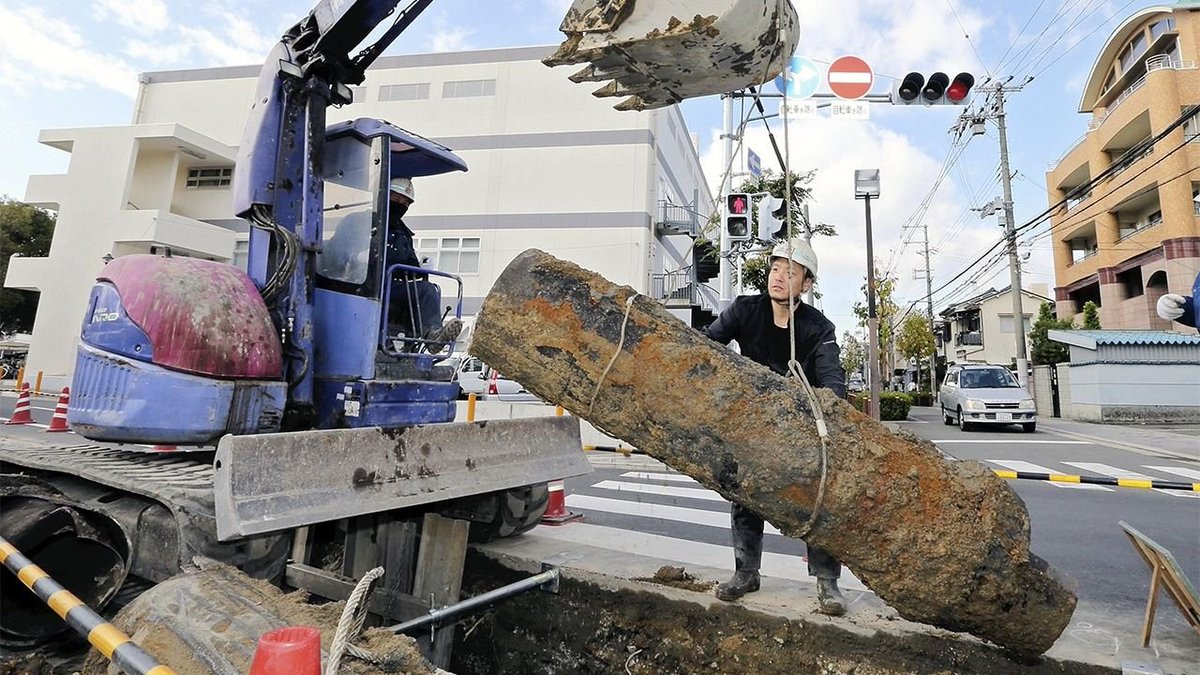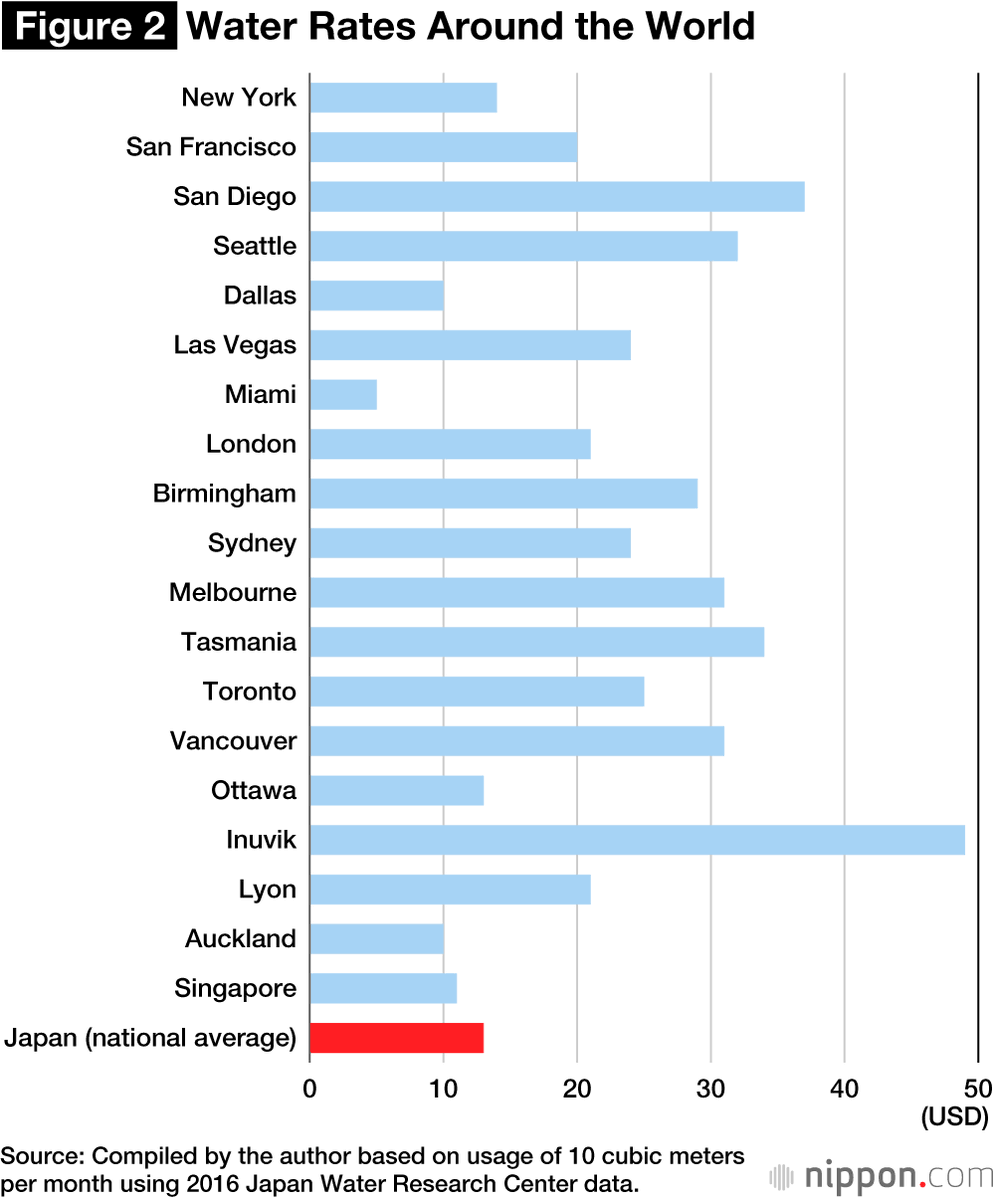Japan's water situation is wild.
Earthquakes, water outages, and rising water bills have many Japanese citizens saying Kekkōdesu (no thank you!).
Here's the situation, and why Japanese water utilities are praying for babies.


cc: @wrathofgnon, @SeenConnors, @MPTeodoro
Earthquakes, water outages, and rising water bills have many Japanese citizens saying Kekkōdesu (no thank you!).
Here's the situation, and why Japanese water utilities are praying for babies.


cc: @wrathofgnon, @SeenConnors, @MPTeodoro
Japan's first high-pressure piped water system was completed in 1898.
A booming population and 20th century economic expansion afforded Japan the ability to construct underground pipe networks and secure public health.
By 2016, 97.6% of Japan had access to tap water.
BUT...
A booming population and 20th century economic expansion afforded Japan the ability to construct underground pipe networks and secure public health.
By 2016, 97.6% of Japan had access to tap water.
BUT...
The water wasn't so 'delicious.'
As Japan's economy grew pollutants also increased... causing serious water quality issues.
Tap water started to smell really foul.
Things got so bad that the gov't implemented advanced water treatment technologies to solve the problem.
As Japan's economy grew pollutants also increased... causing serious water quality issues.
Tap water started to smell really foul.
Things got so bad that the gov't implemented advanced water treatment technologies to solve the problem.
This was done under the slogan 'delicious water supply.'
Today Japan's tap water is not only of the highest quality, but it is also provided at very low fees relative to other countries.
But good things don't last.
The 21st century brought a different kind of difficulty...
Today Japan's tap water is not only of the highest quality, but it is also provided at very low fees relative to other countries.
But good things don't last.
The 21st century brought a different kind of difficulty...
...cost recovery rates less than 100%.
In other words, 1/3 of utilities providing tap water are losing money.
They also faced a pipe replacement rate much lower than the rate required to maintain existing levels of supply.
This leaves little choice but to raise rates.
In other words, 1/3 of utilities providing tap water are losing money.
They also faced a pipe replacement rate much lower than the rate required to maintain existing levels of supply.
This leaves little choice but to raise rates.
According to a March 2018 report it is estimated roughly 90% of Japanese water utilities will be forced to raise their rates by an average of 36% by 2040.
36%!
But Japan also has a declining population.
Less people = less money for water utilities. https://www.nippon.com/en/in-depth/d00434/japan%E2%80%99s-water-utilities-threatened-by-a-declining-population.html
36%!
But Japan also has a declining population.
Less people = less money for water utilities. https://www.nippon.com/en/in-depth/d00434/japan%E2%80%99s-water-utilities-threatened-by-a-declining-population.html
Japan’s population peaked at 128M in 2008 and is on the decline.
According to 2017 statistics, Japan’s total population is expected to drop to 90M by 2063, and 60M by 2100.
So what happens when there aren't enough water drinkers to pay for all the work the utilities must do?
According to 2017 statistics, Japan’s total population is expected to drop to 90M by 2063, and 60M by 2100.
So what happens when there aren't enough water drinkers to pay for all the work the utilities must do?
To top it off, recent 7.0+ magnitude earthquakes have left many citizens without water - over a million to be exact - extending several months in some cases.
The 40 year service life of the pipes put underground during the boom years aren't handling the 'quakes too well either.
The 40 year service life of the pipes put underground during the boom years aren't handling the 'quakes too well either.
So what is Japan doing? PPP's.
Public-Private-Partnerships are getting the spotlight as consolidation of the 1200+ utilities and resource optimization become a necessity.
Firms that integrate tap water and distribution services are seeing cost benefits.
Also...
Public-Private-Partnerships are getting the spotlight as consolidation of the 1200+ utilities and resource optimization become a necessity.
Firms that integrate tap water and distribution services are seeing cost benefits.
Also...
...private sector management practices are bringing rigor to workforce operations.
Japanese private industry is notoriously famous for lean manufacturing and 'kaizen' workplace principles.
The 'Toyota way' is being applied to the water challenge the country currently faces.
Japanese private industry is notoriously famous for lean manufacturing and 'kaizen' workplace principles.
The 'Toyota way' is being applied to the water challenge the country currently faces.
As an island nation, Japan has dealt with unique challenges for a millennia.
The water situation sucks. But the Japanese have proven themselves to be resilient, efficient, and innovative over many centuries.
They'll find a way forward. And other countries should take note.
The water situation sucks. But the Japanese have proven themselves to be resilient, efficient, and innovative over many centuries.
They'll find a way forward. And other countries should take note.

 Read on Twitter
Read on Twitter



